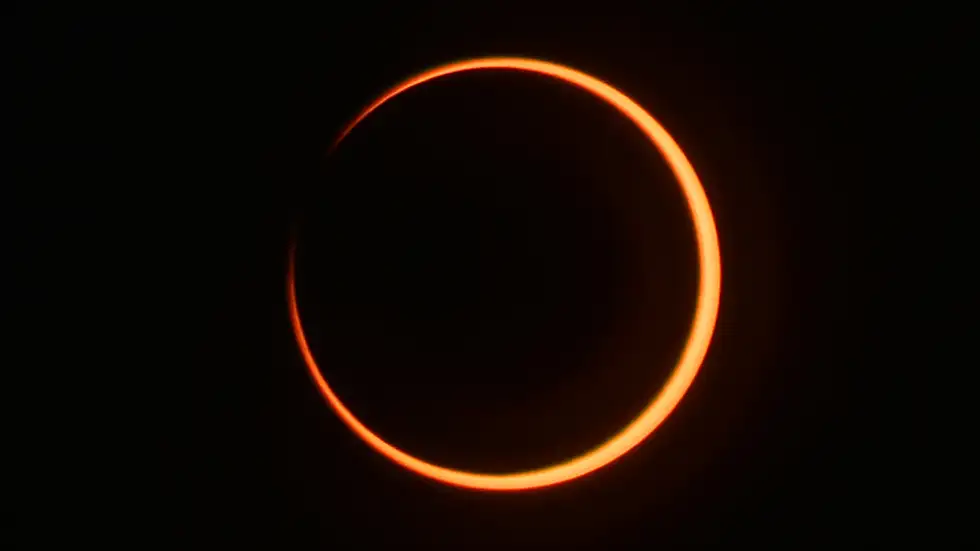A “Ring of Fire” Solar Eclipse: A Rare Celestial Spectacle in 2023
Witness the Enchanting Solar Eclipse on October 14, 2023
Prepare to be dazzled as the celestial stage sets for a rare event – the “Ring of Fire” solar eclipse. This mesmerizing spectacle will grace the sky for the first time since June 2021, and it promises to be an awe-inspiring display of cosmic beauty.
Where to Watch
This year, the “Ring of Fire” eclipse will be visible directly in multiple states, from the scenic landscapes of Oregon, California, Nevada, Utah, and Colorado in the West, to the enchanting vistas of Arizona, New Mexico, and Texas in the south. Beyond the United States, this celestial marvel will also be observable in Mexico, Central America, and South America, expanding its allure across continents.
A Celestial Rarity
Dr. Kelly Korreck, an astrophysicist and NASA program manager for the 2023 and 2024 eclipses, describes this upcoming event as truly unique. The next total eclipse isn’t slated until April 2024, with another annular eclipse in this region not occurring until 2046. Brace yourself for a captivating experience, as this phenomenon will be absent from our skies for a considerable duration.
Understanding the “Ring of Fire” Eclipse
Types of Solar Eclipses
Solar eclipses come in various forms, including total solar eclipses, partial solar eclipses, hybrid solar eclipses, and annular solar eclipses. Our upcoming event on October 14, 2023, is an annular solar eclipse. In this rare occurrence, the moon, at its farthest point from Earth, positions itself between the sun and our planet. While the alignment is perfect, the moon appears smaller than the sun, creating a mesmerizing “ring” effect. This phenomenon is aptly named the “Ring of Fire” solar eclipse.
The Timing
The “Ring of Fire” annular solar eclipse will grace our skies for a duration of 1 to 5 minutes, depending on your viewing location. The spectacle commences in Oregon at approximately 9:13 a.m. PDT and concludes in Texas at about 12:03 p.m. CDT.
Who Gets to Witness the Eclipse?
According to NASA scientist Alex Lockwood, over 6.5 million individuals in the United States will have the privilege of directly observing this celestial event. An additional 68 to 70 million people will be within a 200-mile viewing radius of the eclipse’s path of annularity. Remarkably, nearly everyone residing in the contiguous United States can witness a partial solar eclipse, if not the annular solar eclipse itself, for a few precious minutes.
Safely Observing the Solar Eclipse
Before setting out to witness the “Ring of Fire” phenomenon, it’s crucial to ensure that you have the right solar eclipse glasses for safe viewing. Viewing the eclipse without proper eye protection can pose severe risks to your eyesight.
Lockwood advises using certified ISO 12312-2 compliant solar eclipse glasses, which can be easily found through reputable sellers online. Binoculars, camera lenses, sunglasses, or telescopes should never be used to view an annular solar eclipse unless they have a “special-purpose solar filter secured over the front of the optics.” Failing to do so can result in serious eye injury.
Eclipse glasses that are scratched, torn, or damaged should be discarded, and children must be supervised while using solar viewers.
An alternative method for safe viewing is to create a pinhole projector, which projects the sun’s image onto a nearby surface, allowing you to observe the sun without facing it directly. Remember to avoid looking at the sun through a pinhole projector device.
Watching Online
For those unable to witness the annular solar eclipse in person, NASA will be providing live coverage on October 14 from 11:30 a.m. to 1:15 p.m. EDT. This coverage will be available on NASA TV, NASA’s official website, and NASA’s social media platforms, including Facebook, X, and YouTube. Additionally, NASA’s tracker allows you to follow the path of the annular solar eclipse.
Future Eclipses
The next solar eclipse is scheduled for April 8, 2024, which is just six months away. This upcoming eclipse will be a total solar eclipse, where the moon will fully align over the sun, darkening the sky in a remarkable celestial display.
Photo Credit: Getty Images, The Weather Channel








